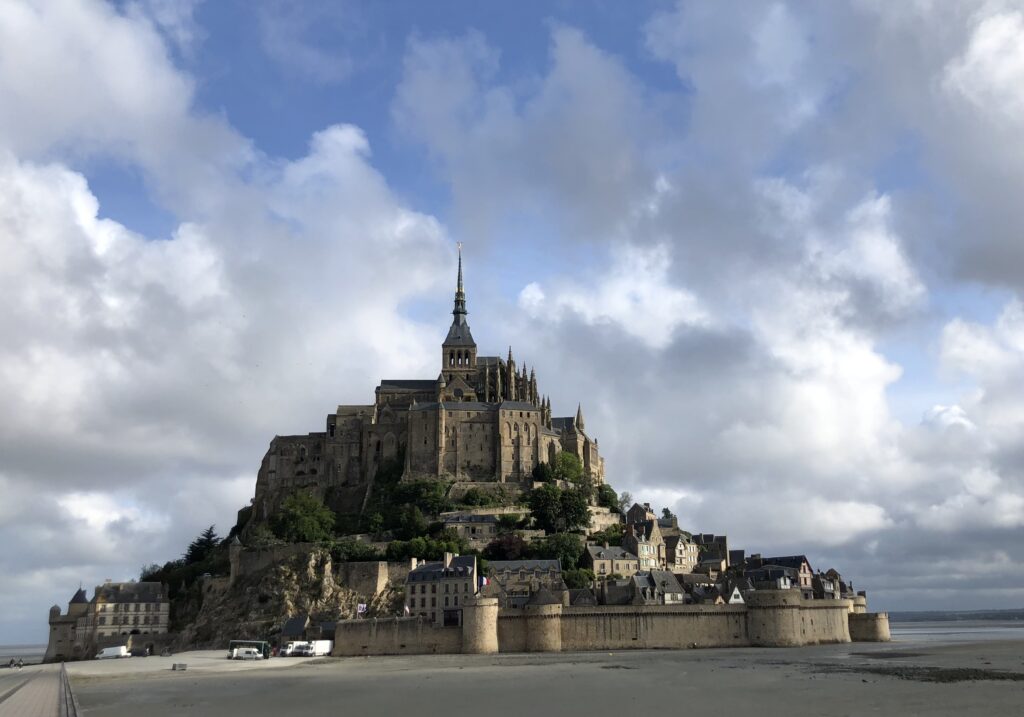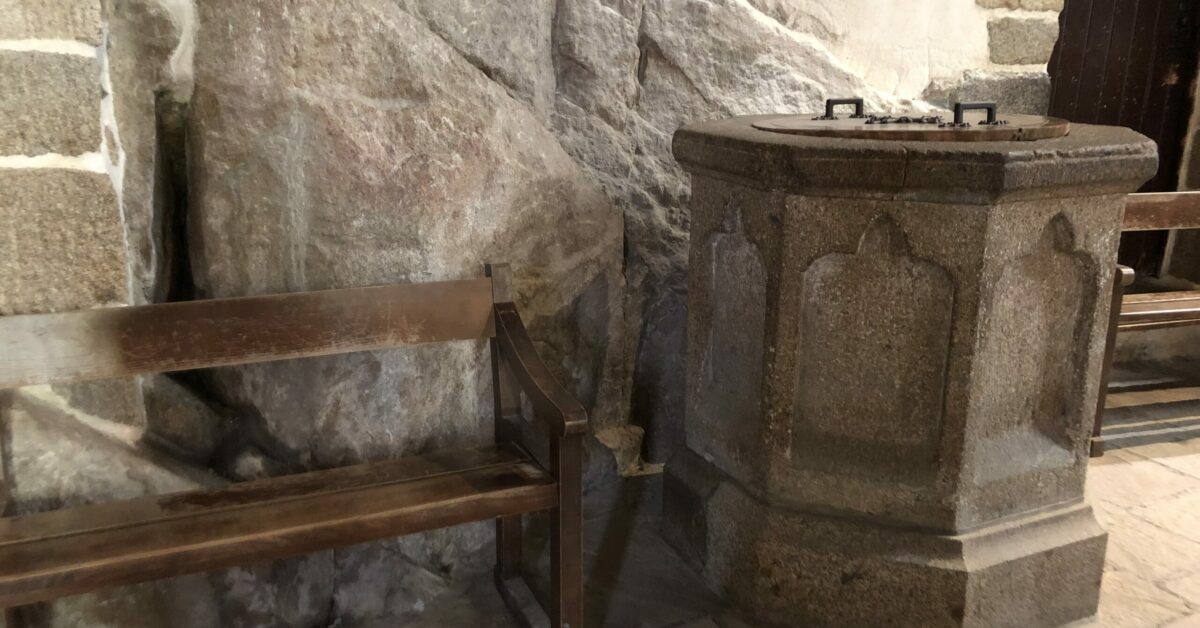Travel Reflections: Mont Saint Michel
Kent has passed the blogger’s baton to me (Rhoda) for the month of July. Having just returned from travels in Europe (where Christianity is waning) and Ethiopia (where Christianity is flourishing), I’ll be sharing some of my pilgrimage experiences, reflecting on baptism, Christian formation, and the presence of Christ in and through the church now and in the past.

The photo (left) is of the UNESCO site, the Abbey of Mont Saint Michel, an island gem off the coast in Normandy, France. The legend surrounding this magnificent site is recorded in a ninth-century document, Revelatio Ecclesiae Sancti Michaelis, which relates events purportedly from 708, when the archangel St. Michael (for biblical references, see Daniel, chapters 10 and 12; Jude 9; Revelation 12:2-12) appeared to Bishop Aubert of Avranches in a dream and instructed him to build a church honoring St. Michael. The chapel eventually built by the bishop (who was as slow as Peter in Acts 10 to catch on to a vision from heaven) was a replica of a cave shrine in Italy built on a spot where St. Michael was said to have appeared in 492. Thus, this remote and holy place was dedicated to St. Michael and quickly became a major pilgrimage site. In 966, a Benedictine presence replaced the group of priests (“canons”) who had managed the pilgrimage site for several centuries. Today the tourists and pilgrims tour the monastic complex built by the Benedictines from the eleventh to the fifteenth centuries on this island rock. But I digress …
With the medieval pilgrims came economic opportunity. As the booklet published by Centre des Monuments Nationaux (purchased in the Abbey gift shop) says, the “flow of pilgrims thronging to the abbey prompted merchants to settle on the rock…. The mercantile atmosphere in the village should not put off the modern visitor: it has always been a part of place” (17). To serve the spiritual needs of the merchants and their families, a parish church was formed; the present building dates from the fifteenth century and is still functioning today. In this modest and ancient church is the baptismal font that heads this blog post. The estimated percentage of the French population that professes to be Christian today is about 50%, making it remarkable that the parish church in this tiny village is still a living and active Christian community. When we visited, there was no sign of when the font had been last used, but there were flyers announcing parish activities, fresh flowers adorning the main and side altars, and prayer requests written in a book. The monastic presence ended with the French Revolution, and from 1793 to 1863 the abbey complex was used as a prison. But the presence of devout Christians who gather regularly for worship has continued (perhaps uninterrupted) through seismic historic events—the Revolution and resulting separation of church and state, the World Wars of the twentieth century, the process of “secularization” and rising number of those with no religious affiliation of the last half century. The architectural masterpiece of the abbey complex is indeed breath-taking and glorious, but the constancy of the living, active Body of Christ in this modest, medieval church is more profound and inspiring.
++++++++++
Photos by Rhoda Schuler
